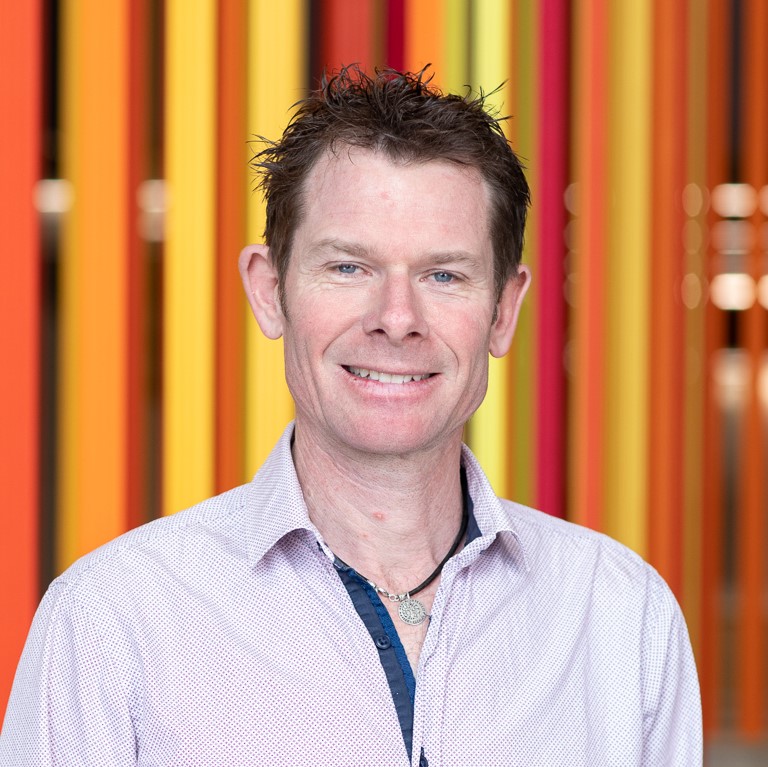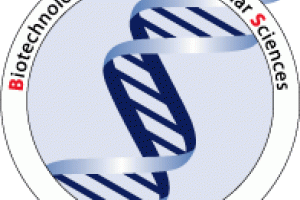Associate Professor Brendan Burns is the Honours coordinator for BABS
Research Program
Ass Prof Burns’ research program is focused on unravelling the evolutionary and ecological significance of early Earth microbial ecosystems: microbial mats and stromatolites. The research group at UNSW that he leads is considered one of the best in the world in the study of these modern systems. These ‘living rocks’, are found in Shark Bay, Western Australia, and are excellent natural laboratories, that may have helped shape the biology of the early Earth. The key to understanding the past is to study the present, and their research team use these ecosystems as excellent model systems to address important evolutionary questions around the origin and evolution of life on our planet.
Ass Prof Burns’ research program transcends all forms of life, from eukaryotes, bacteria, archaea, to viruses.In particular, their research pursues the role of ‘microbial dark matter’ in these systems including the enigmatic group of Asgard archaea. The is aim to break down the traditional distinctions between prokaryotic and eukaryotic life using the archaea as a ‘missing link’. Their research has enhanced our understanding of ‘extreme’ life, and uncovered in these systems for the first time novel microbial lineages in the rare biosphere considered one of the new frontiers of microbial ecology.
The study of microorganisms associated with these formations may also be applied to the search of extraterrestrial life (past or extinct), particularly with the discovery of unique bio-signatures. This work thus aligns well with the goals of the Australian Centre of Astrobiology at UNSW and collaborators at NASA.
This research program combines biogeochemical field measurements, laboratory analytical methods, andrecent advances in functional genomics. In particular, there is the opportunity to employ next-generation sequencing platforms, including various ‘meta’ approaches (genomics, transcriptomics, proteomics).
The group of Ass Prof Burns has a strong sustainability focus and actively addresses key United Nations Sustainability Development Goals (SDG), including SDG13 (Climate Action), SD14 (Life Below Water), SDG15 (Life on Land). In particular, the impact of extreme stressors on microbial communities and critical pathways in threatened mat systems are being assessed and critical to ascertain before any irreversible ecosystem tipping points are reached. Ass Prof Burns works closely with the Department of Parks and Wildlife and Malgana Rangers, to ensure these unique ecosystems are carefully monitored in the face of threats such as climate change.
Ass Prof Burns has a commitment to improve the understanding and ties of First Nations people to their lands, aiming to work closely with the the Traditional Owners (Malgana people) in Shark Bay. The aim is to ensure Ass Prof Burns’ research can be actively given back to Indigenous groups, as well and learning from the extensive knowledge the different language groups have built up over time. This is critical to inform and improve research in the form of two-way exchange of knowledge and best practices.
Most significantly, Dr Burns has demonstrated the importance of an integrated approach to the study of a functionally diverse biological system. The long-term goal is to build on this research and extend these kinds of functional complexity studies to other evolutionally significant environments.
Professional Experience
- 2021-current: Associate Professor, School of BABS
- 2008-2020: Senior Lecturer, School of BABS
- 2006-2010 Australian Research Fellow, School of BABS
- 2005: Lecturer, School of BABS
- 2005: Japan Society for the Promotion of Science Fellow, School of Life and Environmental Science, University of Tsukuba, Tsukuba, Japan
- 2002-2004: ARC Fellow: School of BABS, UNSW
- 2000-2001: Alexander von Humboldt Fellow, Max von Pettenkofer Institute for Hygiene and Medical Microbiology, Ludwigs Maximilians University, Munich, Germany
- 1999-2000: Postdoctoral Researcher, School of Microbiology and Immunology, UNSW
- 1995-1999: Doctoral Student, School of Microbiology and Immunology, UNSW
- 1992-1994: Research Assistant, School of Biochemistry and Molecular Genetics, UNSW
Honours & Awards
- Young Scientist Award (European Helicobacter pylori Study Group; 1997,1998,1999, 2000)
- Alexander von Humboldt Fellowship (2000)
- ASM Research Trust Fellowship (2001)
- Kanagawa Museum of Natural History Award (2003)
- Japan Society for the Promotion of Science Invitation Fellowship (2004)
- NSW Australian Society for Microbiology Members Review Award (2004)
- Eureka Prize for Interdisciplinary Scientific Research (2005)
- Australian Institute of Political Science Tall Poppy Award (2005)
- Visiting appointment: Associate Professor at the University of Tsukuba, Japan.
Select publications
- Reinold M, Wong, HL, Macleod FI, Meltzer J, Thompson A, and Burns BP (2019). The Vulnerability of Microbial Ecosystems in A Changing Climate: Potential Impact in Shark Bay. Life 9, 71; doi:10.3390/life9030071.
- Fisher A, Larkum A, Kühl M, Wong HL, Chen M, Burns BP (2019). Correlation of bio-optical properties with photosynthetic pigment and microorganism distribution in microbial mats from Hamelin Pool, Australia. FEMS Microbial Ecol 95, fiy219.
- MacLeod F, Kindler GS, Wong HL, Ray Chen R, and Burns BP (2019). Asgard archaea: Diversity, function, and evolutionary implications in a range of microbiomes. AIMS Microbiology 5, 48-61. doi: 10.3934/microbiol.2019.1.48.
- Wong HL, White RA, Visscher PT, Charlesworth JC, Vazquez-Campos X, and Burns BP. (2018) Disentangling the drivers of functional complexity at the metagenomic level in Shark Bay microbial mat microbiomes. ISME J 12, 2619-2639.
- White RA III, Wong HL, Ruvindy R, Neilan BA and Burns BP (2018). Viral Communities of Shark Bay Modern Stromatolites. Frontiers of Microbiology 9,1223. doi: 10.3389/fmicb.2018.01223.
- Wong HL, Visscher P.T, White RA, Smith D-L, Patterson M, and Burns BP. (2017) Dynamics of archaea at fine spatial scales in Shark Bay mat microbiomes. Sci Rep, 7, Article number 46160; doi: 10.1038/srep46160.
- Ruvindy R, White RA, Neilan BA, and Burns BP. (2016) Unravelling core microbial metabolisms in the hypersaline microbialites of Shark Bay using high-throughput metagenomics. ISME J 10, 183-196. doi: 10.1038/ismej.2015.87.
- Wong HL, Ahmed-Cox A, and Burns BP. (2016) Molecular ecology of hypersaline microbial mats: current insights and new directions. Microorganisms 4, 6 (doi:10.3390/microorganisms4010006).
- Blaber EA Finkelstein H, Dvorochkin N, Sato KY, Yousuf R, Burns BP, Globus RK, and Almeida EAC. (2015) Microgravity Reduces the Differentiation and Regenerative Potential of Embryonic Stem Cells. Stem Cells Dev 24, 2605-2621.
- Wong HL, Smith D-L, Visscher P.T, and Burns BP. (2015) Niche differentiation of bacterial communities at a millimeter scale in Shark Bay microbial mats. Sci Rep 5, doi: 10.1038/srep15607.
For more information, visit the Burns Lab website.

